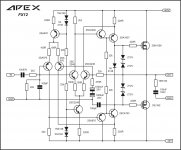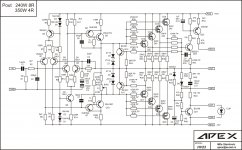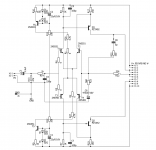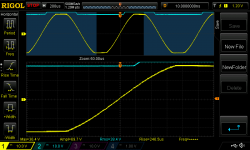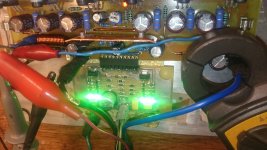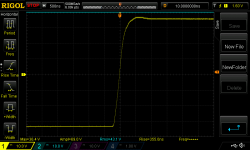I think it's probably metalized polyester film. I think it's the ECQ series.
Anyhow - they sound pretty good I think. Does anyone have experience with comparing polyester film vs polyethylene film? Audible?
Anyhow - they sound pretty good I think. Does anyone have experience with comparing polyester film vs polyethylene film? Audible?
Hey, I just built this - it's like the FH9 on steroids. Have not powered up yet - don't have a wide enough heatsink. Needs to be 180mm wide and I am only at 150mm right now with my standard heat sinks. Maybe a angle strip adapter might work?
http://www.diyaudio.com/forums/soli...-amplifier-simulated-tina-26.html#post4722351
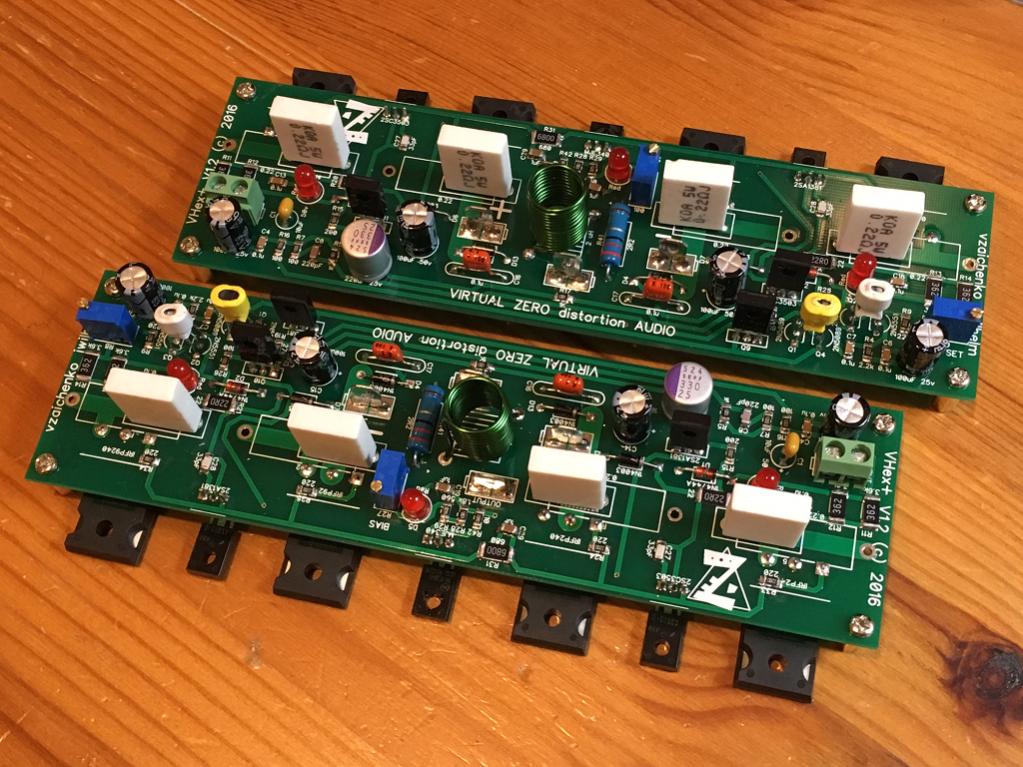
http://www.diyaudio.com/forums/soli...-amplifier-simulated-tina-26.html#post4722351

Is the Panasonic a MKT cap or MKP?
Thanks...
as input cap, I am using russian PEPT capacitors with mkp
Not so expensive on ebay, and good reviews
Last edited:
I think it's probably metalized polyester film. I think it's the ECQ series.
Anyhow - they sound pretty good I think. Does anyone have experience with comparing polyester film vs polyethylene film? Audible?
A simple test. Try shorting the cap and see if you hear any difference. If the cap is imparting anything audible, that should be a good indication.
You check transparency of a cap by bypassing via DC connection? Would need an AC coupled preamp right? I thought it was bad to DC couple into the LTP?
You are right. It's polyester. Polypropilene would be much bigger.
I think it is polypropylene
MKP Capacitor HX 10uF(106K)250v-in Resonators from Electronic Components & Supplies on Aliexpress.com | Alibaba Group
I actually ordered CBB 10uF caps but they sent me the ones shown - has Matsushita marking on it. Maybe CBB is OEM supplier to Matsushita for this particular item? It was $3.90 for qnty 5.
You check transparency of a cap by bypassing via DC connection? Would need an AC coupled preamp right? I thought it was bad to DC couple into the LTP?
You just need to make sure your source doesn't have any DC on its output. That input cap is there to take care of any DC that may be on the source.. It shouldn't impart any sound of its own.
FX12
FX12 front-end looks similar to HV-23.
Attachments
I think many sellers mistakenly specify polyester as MKP ("P" as plastic/poly).
Polyester/mylar (MKT/MKS/MKN) is the cheapest and most produced.
Polyprophylene (MKP) has lower dielectric constant and thus relatively bigger in size.
Just look at the size. If it is relatively small it cannot be MKP. Or you can even listen to it 😉. MKP is more frequency linear. In general this is good but depends on quality this can be fatiguing. MKT is not as linear and the sound is thin, strange or exaggerating certain frequency band (can be interpreted as transparent).
Last edited:
The FX12 look very similar too to my last year Tailgate project, scary fast with mosfets (not finished since).
It should perform very good, with mosfets it would be very easy to bootstrap it to get most out of the PSU rails to the big bass speakers.
For latfets I would advice to add one to92 transistor and compensate diivers temperature. If you will putt amp into the enclosure the bias will drift for sure.
Regards
It should perform very good, with mosfets it would be very easy to bootstrap it to get most out of the PSU rails to the big bass speakers.
For latfets I would advice to add one to92 transistor and compensate diivers temperature. If you will putt amp into the enclosure the bias will drift for sure.
Regards
Attachments
Last edited:
as input cap, I am using russian PEPT capacitors with mkp
Not so expensive on ebay, and good reviews
Easy way to find out the type of cap is to measure capacitance at room temperature and after dipping it in very hot water for a few minutes. PP caps will have reduced capacitance . Most others rise in value.
Look at the chart on the following page..scroll down .There is a colour chart of caps temp sensitivity and one vs Frequency.
https://en.wikipedia.org/wiki/Film_capacitor
Last edited:
FX12 front-end looks similar to HV-23.
Yes it is similar and pcb design can be based on HV23 pcb.
Regards
The FX12 look very similar too to my last year Tailgate project, scary fast with mosfets (not finished since).
It should perform very good, with mosfets it would be very easy to bootstrap it to get most out of the PSU rails to the big bass speakers.
For latfets I would advice to add one to92 transistor and compensate diivers temperature. If you will putt amp into the enclosure the bias will drift for sure.
Regards
There is no bias drift with 1N4148, Vbe multiplier with TO92 transistor instead variable resistor is better to use if you want set bias.
Regards
Easy way to find out the type of cap is to measure capacitance at room temperature and after dipping it in very hot water for a few minutes. PP caps will have reduced capacitance . Most others rise in value.
Interesting...I didn't know that. Thank you for the tip.
The FX12 look very similar too to my last year Tailgate project, scary fast with mosfets (not finished since).
It should perform very good, with mosfets it would be very easy to bootstrap it to get most out of the PSU rails to the big bass speakers.
For latfets I would advice to add one to92 transistor and compensate diivers temperature. If you will putt amp into the enclosure the bias will drift for sure.
Regards
Very nice IPS. I see you are using 2 green LEDs for the CCS transistor bases. Is that to get a higher voltage drop vs a single red LED? I like your SMT implementation.
Easy way to find out the type of cap is to measure capacitance at room temperature and after dipping it in very hot water for a few minutes. PP caps will have reduced capacitance . Most others rise in value.
Look at the chart on the following page..scroll down .There is a colour chart of caps temp sensitivity and one vs Frequency.
https://en.wikipedia.org/wiki/Film_capacitor
Hi,
thank you for your feedback,
I have this russian capacitor in parallel of wima MKP on my class D amplifier and I think it is sounds good.
I agree with you on the capacitance stability for these capacitors.
But:
If my understanding is correct the blocking frequency f=1/(2piRC)
I don't know R as my understanding of amplifier impedance is poor, but I assume it is in kOhm.
If my reading is correct, a big change for this capacitor is 2% (it is huge in Audio!!)
2% change of C (10 uF+/-2) means few changes on f ????
Here is a thread about russian caps:
http://www.diyaudio.com/forums/lounge/143675-petp-capacitors-one-best-7.html
I know there are different opinion, and it may depend of the entire system....
but in my DIY class D I have punch in the speakers with PETP and MKP parallelized.
- Home
- Amplifiers
- Solid State
- 100W Ultimate Fidelity Amplifier
